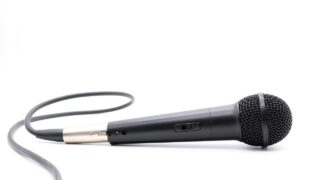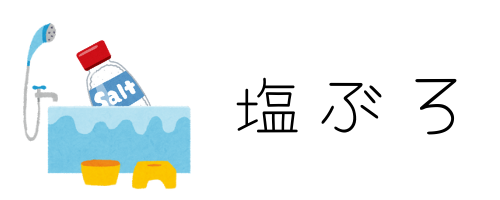ライフハックとしてではなく、英語学習にも極めて有用なのが、著名人が10分程度のプレゼンを行うTEDです。
TED Talksとは、あらゆる分野のエキスパートたちによるプレゼンテーションを無料で視聴できる動画配信サービスのことです。10年ほど前にサービスが開始されてから、政治、心理学、経済、日常生活などの幅広いコンテンツが視聴できることから人気を集めています。
RareJob English Lab
TEDは4000を超える膨大な数の動画があります。しかし慣れないうちは、動画の探し方や視聴のコツが分かりませんよね。この記事では、数多くのTEDを見てきた管理人(塩@saltandshio)が、心を揺さぶられたトークをあらすじと一緒にご紹介します。
ビジネス英会話を効率よく身につけたい方におすすめスクール
シェーン英会話
シェーンは1977年の創業以来、ネイティブ講師が英語を英語で教える「直接教授法」を採用しています。首都圏におけるスクール拠点数は、ネイティブ講師の英会話スクールでNo.1。駅から近いスクールが多いので通いやすく時間を有効に使えます。
スピークバディ パーソナルコーチング
1日1時間の短期集中トレーニングで、あなたの英語力向上をコーチが全力でサポートします。あなたの英語の世界が、劇的に変わります。
メリッサ・マーシャル:私に科学を熱く語って!
メリッサ・マーシャルは、科学の門外漢として、全ての科学者にメッセージを送ります。「あんたたちのしていることに興味あるわ。だから語って聞かせてよ。ただしわかる言葉でお願い」。 マーシャルは、複雑な科学のアイデアを一般の人に紹介する時に有効となるコツを、たった4分で語り明かしてくれます(約4分半)。
[PR]無料体験レッスン実施中!全国208校、創業40年の老舗英会話スクール【シェーン英会話】私たちは科学者やエンジニアたちと意思疎通を図る必要がある
メリッサ・マーシャルは、ある日ペンシルバニア州立大学から工学部の学生相手にコミュニケーションの授業をするように頼まれました。
恐怖を感じたものです(笑) 。工学部の学生は頭が良くて、分厚い本を抱え、分からない言葉を使うものだと思って怖かったんです。
And I was scared. Really scared. Scared of these students with their big brains and their big books and their big, unfamiliar words.
しかし、彼らと付き合っていくうちに、メリッサ・マーシャルは不思議の国のアリスになって、アリスがウサギ穴に落ちて新世界へ入っていくような不思議な気持ちになりました。なぜなら、彼らのアイデアはとても面白く、大変に興味深いものばかりだったからです。
実際に、彼らは私たちが抱える非常に難しい問題に立ち向かってくれています。エネルギー問題、環境問題、ヘルス・ケアなど、私たちがそれらの問題を理解しなければ問題解決には至りません。メリッサ・マーシャルも「何も知らない私たちにはその問題を理解する責任がある」と言います。
ですが、私たちが問題を理解するためには、科学者とエンジニアの人たちにも協力が必要です。そこで、専門家か一般人に問題を理解させるためのポイントを、メリッサ・マーシャルが3つ紹介します。
[PR]まずは無料カウンセリング”続けるため”の オンライン英語コーチ「スピークバディ パーソナルコーチング」一般人にも伝わるポイント(1)疑問に答える
まずは「それがどうした?」という疑問に答えることです。
First question to answer for us: so what?
専門家だけでなく、私たちは自分が理解していることは既に相手も知っているはずだ、という前提で話してしまいます。なので、本題に入る前にその科学が私たちにどう関わるのかをまず説明しましょう。
例を出すと、「骨梁を研究しています」ではなく、「粗しょう症の理解と治療のために、骨にある網目状の構造の骨梁を研究しています」と言えば、相手は話を聞いてくれる気になるでしょう。
[PR]しちだの魔法ペンなら35日でバイリンガルに!楽天4部門1位の英会話!<七田式>一般人にも伝わるポイント(2)専門用語は使わない
次に、科学にしろなんにしろ専門用語を使う際には注意が必要です。専門用語のような難しい言葉を使われると、言われたほうは相手が賢いような気がして卑屈になってしまいますし、言っている本人もひょっとしたら相手の反応を見て優越感に浸ってしまうかもしれませんから。
もうひとつ、わかりやすく伝えるといっても、不正確な内容を伝えないように気を付けなければいけません。
アインシュタインが言ったようにするんです。可能な限り簡潔に。でもそれ以上簡潔にしようとはしないこと。誤魔化しを入れずに科学を明確に語ることだって可能なのです。
Instead, as Einstein said, make everything as simple as possible, but no simpler. You can clearly communicate your science without compromising the ideas.
劇作家の井上ひさしさんの言葉に「むずかしいことをやさしく、やさしいことをふかく、ふかいことをおもしろく、おもしろいことをまじめに、まじめなことをゆかいに、そしてゆかいなことはあくまでゆかいに」というのがあります。
そんな気持ちで話せば、私たちにとっては難しい世界がより伝わりやすくなるでしょう。
[PR]知って得する、知らないと損をする!すぐに役立つ相手に合った「伝え方」のコツ!一般人にも伝わるポイント(3)箇条書きを使わない
さいごに、相手に伝える際に箇条書きを使うのはやめましょう。
なんで bullet point (銃弾点) と呼ばれているか分かりますか?銃弾が何をするものか考えてください。そう、プレゼンテーションを殺してしまうのです。
Have you ever wondered why they’re called bullet points? What do bullets do? Bullets kill, and they will kill your presentation.
箇条書きされた資料は、作った本人はポイントを短くまとめて簡潔に伝えていると思っていますが、見ているほうは退屈なだけでなく、脳の言語野に大きな負担をかけて疲れてしまいます。
コツはポイントと文を1つに絞ることです。そうすれば、聞いている側はわかりやすいだけでなく大きく理解してくれます。この3点に気を付けるだけで、専門家と一般人の垣根はだいぶ越えやすくなるでしょう。
[PR]検定試験合格者累計140万人!スマホ対応☆国家資格ほか資格取得ならSMART合格対策講座まとめ:わたしたちを不思議の国に連れて行って!
専門的な世界の扉は、開けるまではなにが待ち構えているかわからず怖いものです。しかし、扉を開いてみるとそこには不思議の国のアリスのようなワンダーランドが広がっています。
「科学」から 「箇条書き」と「専門用語」を差し引き、聴き手にどう関わるかを意味する「関連性」で割り、研究に注いでいる「情熱」を掛け合わせると高い「理解度」を伴う、素晴らしい意思疎通が得られます。
科学者やエンジニアの皆さん。この方程式を解いて、ぜひとも私に熱く科学を語ってください。
Take your science, subtract your bullet points and your jargon, divide by relevance, meaning share what’s relevant to the audience, and multiply it by the passion that you have for this incredible work that you’re doing, and that is going to equal incredible interactions that are full of understanding.
And so, scientists and engineers, when you’ve solved this equation, by all means, talk nerdy to me.
専門家のみなさん、どうかむずかしい言葉も説明も使わずに、私たちの手を取って不思議の国のアリスの国へといざなってください。そうすれば、お互いの世界が大きく広がっていくことでしょう。
英語全文
Five years ago, I experienced a bit of what it must have been like to be Alice in Wonderland. Penn State asked me, a communications teacher, to teach a communications class for engineering students. And I was scared.
<全文を読む>▼クリック▼
We desperately need great communication from our scientists and engineers in order to change the world. Our scientists and engineers are the ones that are tackling our grandest challenges, from energy to environment to health care, among others, and if we don’t know about it and understand it, then the work isn’t done, and I believe it’s our responsibility as non-scientists to have these interactions. But these great conversations can’t occur if our scientists and engineers don’t invite us in to see their wonderland. So scientists and engineers, please, talk nerdy to us.
I want to share a few keys on how you can do that to make sure that we can see that your science is sexy and that your engineering is engaging. First question to answer for us: so what? Tell us why your science is relevant to us. Don’t just tell me that you study trabeculae, but tell me that you study trabeculae, which is the mesh-like structure of our bones because it’s important to understanding and treating osteoporosis.
And when you’re describing your science, beware of jargon. Jargon is a barrier to our understanding of your ideas. Sure, you can say “spatial and temporal,” but why not just say “space and time,” which is so much more accessible to us? And making your ideas accessible is not the same as dumbing it down. Instead, as Einstein said, make everything as simple as possible, but no simpler. You can clearly communicate your science without compromising the ideas. A few things to consider are having examples, stories and analogies. Those are ways to engage and excite us about your content. And when presenting your work, drop the bullet points. Have you ever wondered why they’re called bullet points? What do bullets do? Bullets kill, and they will kill your presentation. A slide like this is not only boring, but it relies too much on the language area of our brain, and causes us to become overwhelmed. Instead, this example slide by Genevieve Brown is much more effective. It’s showing that the special structure of trabeculae are so strong that they actually inspired the unique design of the Eiffel Tower. And the trick here is to use a single, readable sentence that the audience can key into if they get a bit lost, and then provide visuals which appeal to our other senses and create a deeper sense of understanding of what’s being described.
So I think these are just a few keys that can help the rest of us to open that door and see the wonderland that is science and engineering. And because the engineers that I’ve worked with have taught me to become really in touch with my inner nerd, I want to summarize with an equation. Take your science, subtract your bullet points and your jargon, divide by relevance, meaning share what’s relevant to the audience, and multiply it by the passion that you have for this incredible work that you’re doing, and that is going to equal incredible interactions that are full of understanding. And so, scientists and engineers, when you’ve solved this equation, by all means, talk nerdy to me. Thank you.
<閉じる>
\ ほかにも気になるトークが満載! /








